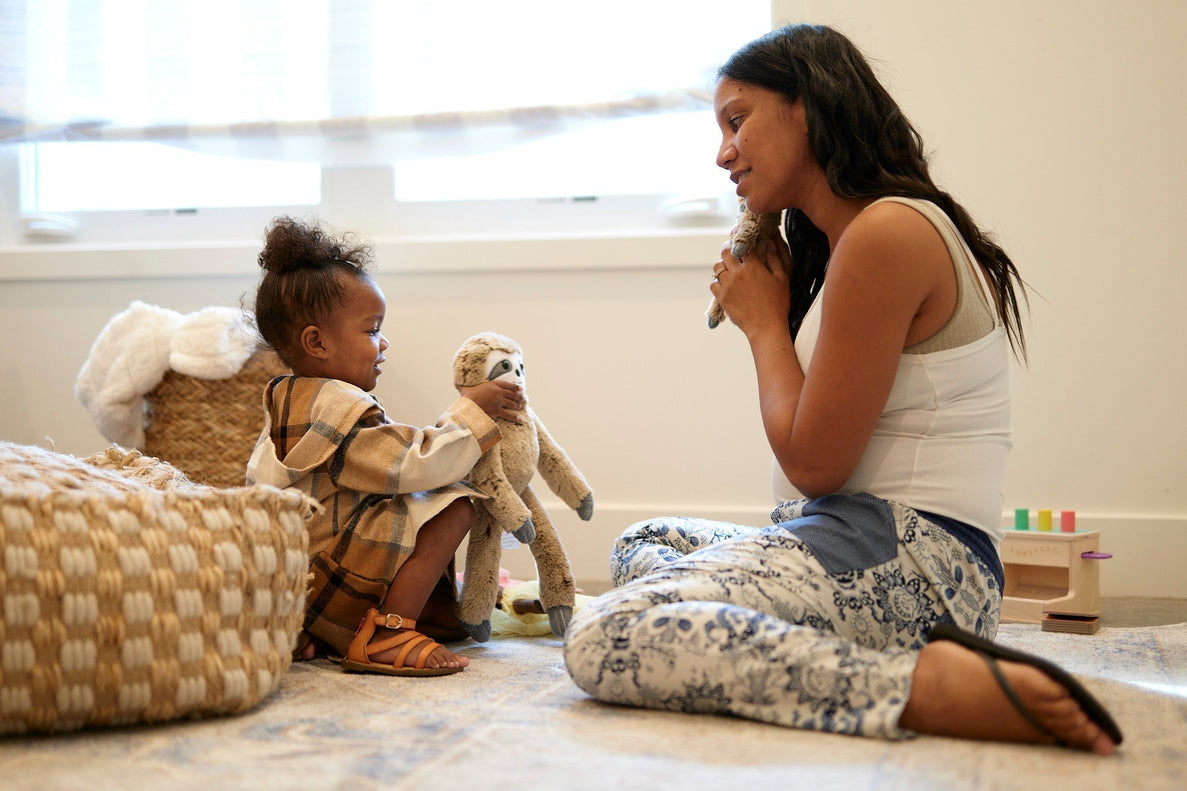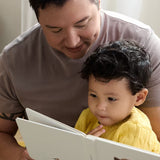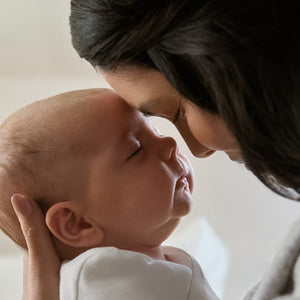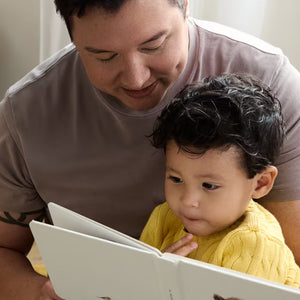Need some inspiration for activities for toddlers? Let’s walk through things to do with toddlers (18 months - 4 years), ideas for indoor and outdoor activities, sensory play, gross motor activities, and more.
For little ones 0-18 months, check out these Baby Activities.
Did you know how your toddler spends awake time plays a role in their sleep? It’s true! Just like adults, toddlers sleep better when they move their bodies and use their brains during awake time. Of course, awake time isn’t the only important factor in your little one’s sleep.
A note about development and choosing activities for toddlers:
If you have a toddler, you’re probably noticing some big developmental strides. Toddlers typically have a big burst of language and show interest in pretend play. They’re improving their gross motor skills, like running and climbing. They’re also expressing an increased desire for independence.
These months (and years) tend to be full of your toddler experimenting with cause and effect and testing boundaries. They’re learning about their ability to impact the world around them and that their actions can cause reactions. You may even notice some changes in your toddler’s sleep.
Expert Tip: When it comes to toddler sleep, it’s vital that we consider your child’s emotional, mental, and physical development. I’d love to share more about filling your toddler’s tanks and the importance of looking at your little one as a complex, whole human.
Let me share activities for toddlers by age:
Activities for your 18-24 month old:
Activities for an 18 month old
-
Invite your toddler to help you with everyday tasks. They love imitation! This could look like wiping the table, filling a water bottle, or feeding a pet.
-
Build an obstacle course using soft objects, like pillows or cushions. Add in some soft balls to entice your little one to try rolling, throwing, and chasing.
-
Read board books together. Books with rhyming and repetition are great for this age. Ask your toddler to point to familiar pictures in the book (“Where is the doggy?”) to help build language skills.
-
Promote fine motor skills by playing with large letter or animal magnets on the fridge. Don’t have any? Taping pom poms or other small toys on the fridge works too! (Safety Tip: Please be sure to closely supervise your little one with any small objects.)
Here are ideas for the best toys for 18 month olds to use in your activities.
Activities for a 19 month old
-
Explore a local playground or library! Check with your local library or community center to see if they offer free activities for toddlers.
-
Set up a shallow storage bin with some water, add some small floating objects (like ping pong balls or small plastic blocks) and let your toddler scoop out the objects with measuring cups. (Safety Tip: Be sure to keep a close eye on your toddler with any water-related activity.)
-
Encourage pretend play using a stuffed animal. Let your toddler pretend to feed their doll with a play spoon and bowl, change their diaper, or wipe a pretend stuffy nose. This helps develop imagination, social skills, and creativity!
-
Grab a paintbrush and a cup of water and let your toddler paint the driveway!
-
Practice stacking blocks and see how many your toddler can do on their own.
Here are ideas for the best toys for 19 month olds to use in your activities.
Activities for a 20 month old
-
Play with plastic toys and water! You can use a shallow storage bin, a water table, or even the bathtub to give plastic toys a bath with a scrub brush or wash cloth. Think plastic baby dolls, dinosaur toys, or plastic trucks. (Safety Tip: Be sure to keep a close eye on your toddler with any water-related activity.)
-
Try a sorting activity. Grab a few colors of construction paper and toys around the house that match those colors. Let your toddler sort the toys by color (They might need your help.). (There are also some great non-DIY options available. I linked them below.)
-
Go outside! Grab some sidewalk chalk and watch your little artist explore. Draw some shapes and name them for your toddler.
-
Practice starting to kick a ball. (This usually works better with a larger ball at this age.)
-
Bake something together. Let your toddler pour in some ingredients and mix them up!
-
Hand over the crayons and a blank piece of paper and let your toddler create a masterpiece.
Here are ideas for the best toys for 20 month olds to use in your activities.
Activities for a 21 month old
-
Make a simple memory game. Print or draw 4 pictures of familiar objects or animals. Turn them face down and ask your toddler to find them. Example: “Where’s the dog?” When your toddler flips over the correct picture, leave it facing up, and repeat for the remaining pictures.
-
Play in water! Make some different shapes out of sponges (or buy some premade sponges). Have your toddler squeeze water out of the sponges, while becoming more familiar with shapes at the same time. You can also use the sponges for sponge painting! (Safety Tip: Please be sure to closely supervise your little one with any water-related activity.)
-
Try a color matching activity. Color some craft sticks (or buy already colored sticks) and have your toddler match them to the same colored construction paper, a container of the same color (like a cup or bowl), or objects around the house that match the color.
-
Practice making animal sounds! Bonus: add in animal pictures or figurines for more fun.
Here are ideas for the best toys for 21 month olds to use in your activities.
Activities for a 22 month old
-
Take turns by doing a stacking activity together. Use “my turn” and “your turn” to help your toddler practice this concept.
-
Help your toddler identify body parts by placing a gift bow on different body parts, like head, belly, and feet. Once they seem to get the hang of this, you can practice following directions by having them put the bow on their own body parts (“Put the bow on your head”).
-
Play “Hide and Seek” around the house. Hide a familiar object, like a stuffed animal, and then find it together. You can help your toddler’s vocabulary by using descriptive words like “under," "on," and "in” to describe where the object is hidden.
-
Get creative with toilet paper rolls. Make tunnels for toy cars, slides for pom poms, and binoculars to play “I Spy.”
-
Offer large wooden beads (think BIG so that they aren’t a choking hazard) and have your toddler string them on a shoestring.
-
Encourage your toddler to use items in different ways. Model using a block as a toy phone or a play bowl as a hat.
Here are ideas for the best toys for 22 month olds to use in your activities.
Activities for a 23 month old
-
Play search and find as you read. “Do you see the car on this page?” “Which animal is on the rug?” This can help with language development.
-
Promote fine motor skills with a threading activity by having your toddler pull pipe cleaners from the holes of a colander. Once they get the hang of pulling, give them a chance to put them through the holes on their own (You’ll probably need to guide them to start.).
-
Build with blocks- make towers to knock over or play with!
-
Try to keep a balloon in the air by taking turns batting it around. You can also try kicking for gross motor skill development.
-
Allow your toddler to be in control of turning the pages when you read a book.
-
Hold your child’s hands and practice “jumping” off the lowest stair or a curb. That small jump down with your support helps your child learn to jump on their own on the floor.
Here are ideas for the best toys for 23 month olds to use in your activities.
These are suggestions for activities for toddlers 18-24 months. Keep in mind, every toddler develops at their own pace. You can try these activities before, throughout, and after these months. Your toddler will continue to learn and explore their world with the same activities even at different ages.
If you need help setting up your toddler’s day, I have sample schedules for you.
Activities for 2, 3, and 4 year olds:
Activities for 2 year olds
-
Encourage motor skill development by building with toys like Duplo blocks, foam blocks, or suction cup builders.
-
Read your favorite books together. Encourage language development by asking your toddler to point to different objects “Can you find the cow’s baby?” “Which ball is red?” “Which monkey has a banana?”
-
Build a fort! Set up some chairs and throw a big blanket over them. Read together in the fort, use a flashlight, or bring some toys in!
-
Promote your toddler’s independent play along with problem-solving skills and hand-eye coordination with puzzles.
-
Grab a small spray bottle and fill it with water. Let your 2 year old help “wash” the windows, wipe down a table, or spray plants outside.
-
Use a toy dollhouse made for toddlers to let your child play out familiar stories about their day. They will love reenacting bedtime, a parent leaving for work, etc. with small figurines.
-
Try a play kitchen to let your toddler serve and cook food.
-
Toddlers love to use stamps to create artwork. Find washable stamp pads, give them stamps that fit well in their hands, and let them create their best work!
Here are ideas for the best toys for 2 year olds to use in your activities.
Activities for 3 year olds
-
Try a scavenger hunt around the house or in the yard. Make a list of 5-7 familiar objects (use images instead of words for even more independence) and then send your toddler to go find them.
-
Have a picnic (real or pretend) together in the yard or at a park. If it’s rainy outside, you can also have a carpet picnic!
-
Engage in imaginary play. Maybe this looks like play “cooking” using measuring cups and bowls from your kitchen, playing “farm” with farm animal figurines, or playing “doctor” with a toy doctor set.
-
Promote creativity through art. You can use crayons or paint sticks with paper. A great mess-free option is a magnetic doodle board.
-
Use painters’ tape to create a road on the floor. Let your 3 year old drive their cars all around. Add blocks or other structures to make a whole city!
-
Use a pretend tool set to let your toddler build and “fix” things around the house.
-
Try out magnetic dress up dolls as a fun way to let your toddler create new scenes and characters.
-
Have your toddler lay down on a large sheet of paper and trace their body. Let them color in clothes, facial features, hair, etc..
-
Grab a plastic baby doll and an empty plastic tub (or use the sink) and let your 3 year old give the baby a bath. (Safety Tip: Please be sure to closely supervise your little one with any water-related activity.)
Here are ideas for the best toys for 3 year olds to use in your activities.
Activities for 4 year olds
-
Have a “freeze” dance party! Play music for 10-15 seconds, then stop the music, and shout “Freeze!” Demonstrate this for your toddler until they get the hang of it and join you.
-
Work on fine motor skills and your child’s creativity with arts and crafts. Think chalk on the driveway, letting your child decorate with stickers, or making patterns with beads on pipe cleaners.
-
Play “I Spy” together to develop your toddler’s observational skills. This can be a great game when you’re in the waiting room, when you’re exploring the park, or even when you’re reading a book.
-
Give your toddler a chance to use their imagination by creating a pretend restaurant. Boxes from the pantry, toy food, or even drawings of food can all be part of the fun. (There are some good already-made kid versions available as well. I linked them for you below.)
-
Find toys with small figurines to let your 4 year old play out social scenes or create their own stories.
-
Bake and decorate cookies together. 4 year olds love to help in the kitchen!
-
Make a dress up bin with old Halloween costumes, random hats, scarves, aprons, or other accessories. 4 year olds love to dress up in character.
Here are ideas for the best toys for 4 year olds to use in your activities.
Need help with toddler nap schedules or setting up your 2, 3, or 4 year old’s day? I have a blog on nap schedules for you.
What are sensory activities for toddlers?
Sensory activities are those that engage our senses: sight, touch, taste, sound, or smell. These activities play a vital role in development. Your child’s motor, language, social, and emotional skills all grow through sensory play. These activities can also be calming and promote self-regulation.
Here are some ideas for sensory activities for 2, 3, and 4 year olds:
-
Splash around at a water table or in the bath. Use measuring cups and funnels and watch how the water moves. Bring a few small toys and have your toddler guess which ones will sink and which will float. (Safety Tip: Please be sure to closely supervise your little one with any water-related activity.)
-
Dig for buried treasure. Fill a shallow bin with oats or rice and hide small objects like pom poms or puzzle pieces to let your little one explore with their hands or scoops.
-
Play with play dough. Let your toddler create whatever they can imagine. If needed, provide some prompting to get started. Try a small rolling pin or craft sticks for extra fun.
-
Try finger painting. This kind of creative sensory activity helps your toddler use their senses and decision-making skills.
-
Make music together. Let your toddler use their imagination with wooden spoons, bowls, and pots.
Here are ideas for sensory toys for toddlers.
What are gross motor activities for toddlers?
Gross motor skills typically use whole body movements and involve large muscles like the arms, legs, and torso.
Whole body movement and gross motor activities are so important because:
-
They can lead to increased coordination and development of other skills like fine motor and language.
-
They allow your toddler to better understand and control their body.
-
They help fill your toddler’s tired tank™.
Here are some ideas:
-
Practice climbing. Take a few trips up and down the stairs- add in counting or singing for extra entertainment. Allow your little one to explore at the park. Or try out a climbing triangle.
-
Practice balancing. Place a long strip of painter’s tape along the floor and have your little one try to stay on the line as they walk. Try out a balance bike (Don’t forget a helmet!). Balance stepping stones can be a fun addition to an obstacle course at home.
-
Practice jumping. Place a few strips of painter’s tape on the floor and have your little one jump to each piece (only a few inches apart for a 2 year old and 1-2 feet apart for 3 and 4 year olds). Try jumping in and out of hoops laid on the floor. Pretend to be frogs or bunnies and hop around the room.
Here are ideas for gross motor toys for toddlers.
Fine motor activities for toddlers
Fine motor skills involve movements using the small muscles in our body like hands, lips, tongue, and eyes. When little ones do fine motor activities, they are improving their hand-eye coordination, preparing their mouth for improved speech, and developing the skills that will allow them to grasp a pencil and write in the future.
Here are some fine motor activities for 2, 3, and 4 year olds:
-
Play with play dough. You can use store bought or make your own at home. Squeezing and interacting with play dough helps to strengthen those tiny hand muscles.
-
Have fun with art. Holding pencils, crayons, markers, or a paintbrush are all ways that your toddler can build those fine motor skills. Let art be a process, instead of worrying about a “perfect” craft or finished product.
-
Try out stickers. Pulling stickers off a sticker sheet and place them on paper (or even on an arm or hand) is a perfect game to practice fine motor skills.
-
Make eating fun! Try adding foods with different textures to your toddler’s plate, foods that need utensils, and finger foods. Experimenting with using these tools, their hands, and coordinating bringing food to their mouth are all part of developing fine motor skills.
-
Cut with plastic scissors or safety scissors. Practice cutting paper, cooked noodles, or play dough. If your toddler isn’t quite ready for cutting, using their fingers to tear paper is a great first step.
-
Dress up your stuffed animal. Use doll clothes or even newborn clothes and let your toddler practice putting clothes onto a doll, buttoning buttons, zipping a zipper, and pulling on socks.
Here are ideas for fine motor toys for toddlers.
What are indoor activities for toddlers?
Looking for ideas for indoor rainy day activities for your toddler? Even if the weather is keeping you from getting outside, play and movement are building blocks to sleep success. Many of the activity ideas above can be done inside, but here are some more indoor activities for 2, 3, and 4 year olds:
-
Play Hide and Seek in different ways.
-
Take turns hiding a stuffed animal and then finding it together.
-
Take turns hiding from each other. Start with small increments your toddler’s first few times playing. Count until 10 to hide and come out from hiding if they’re having a hard time finding you after 30-60 seconds. Increase the time as your toddler gets the hang of the game.
-
Add in a matching game. Use different colored sticky notes or draw different shapes on sticky notes and then hide them around the house. Have your little one find them and then sort them in matching categories.
-
Hide plastic eggs around the house (It’s an Easter egg hunt year round!).
-
-
Create an obstacle course. Use pillows to walk across, painter’s tape to jump to, soft balls to toss into bowls, and a tent made from chairs and a blanket to crawl under. Add in whatever activities your little one enjoys. Bonus: this is also a great way to build gross motor skills!
-
Build together. Use blocks to make a tower. Cushions and chairs to build a fort. Cups to stack. A house made of boxes. Encourage them to use their imagination to guide this activity.
-
Sing songs that help your little one identify body parts, like “Head, Shoulders, Knees, and Toes,” “The Hokey Pokey,” or “Tooty Ta.” Movement songs like these are both sensory and gross motor activities!
Here are ideas for indoor toys for toddlers.
What are outdoor activities for toddlers?
If you’re able, try to get outside with your little one! Exposure to light during the day helps with sleep pressure, which is key to falling asleep and staying asleep. Many of the above activities for toddlers can be done outside, but here are some more outdoor activities for 2, 3, and 4 year olds:
-
Catch bubbles! Use a bubble machine or blow bubbles. Running and jumping to catch them also helps with gross motor skills.
-
Go on a nature or neighborhood walk. Think of things you want to find together: Can we find a red bird, a blue bird, and a yellow bird? Can we find a red car, black car, and a white car?
-
Create a nature collection in a bucket or a brown paper bag. Can we find 5 leaves? 3 rocks? 1 stick? Then let your little one use their imagination for how they want to play with their collection. Tip: Before starting this activity, be sure to let your toddler know that this collection will stay outside (unless you’re okay with it coming inside).
-
Engage in sensory play with sand. Play in a sandbox or put some sensory sand in a shallow bin and let your little one explore. Use shovels or other utensils to move sand around or bury some small toys.
-
Find outdoor things to paint with like a pinecone, stick, or leaf and see what you can make.
-
Do you have a slide in your backyard? Let your little one pile leaves (or snow) at the bottom to slide into.
-
Are you in an area with acorns or other small objects? Use a wrapping paper tube as a chute to drop them from one space to another, like down the stairs or from the seat of a bench to the ground.
-
Play follow the leader and let your toddler lead. Crawl, climb, and play following them around.
-
Head to the park! Parks can be a great space to practice gross motor skills, meet friends, and use up some of that toddler energy.







